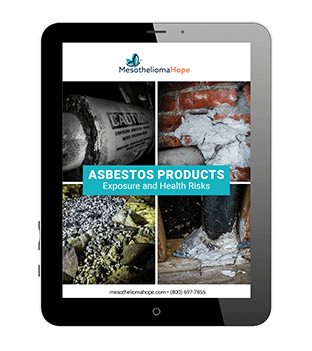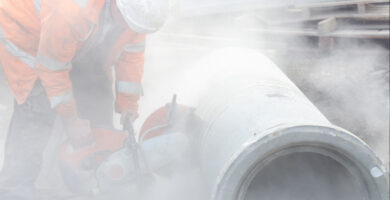While many buildings from decades past hold a certain charm and historical ambiance, their outdated construction materials may pose a deadly risk to those who work in them.
Why Is There Asbestos in Old Buildings?
This recently became reality for more than one thousand employees, when the Metropolitan Transit Authority (MTA) discovered cancer-causing asbestos in their East New York bus depot in Brooklyn.
According to the New York Daily News, the contamination originated in the heating and cooling vents, which contained asbestos-filled cloth designed to reduce vibrations and lessen noise when air passes through. Built in 1947, much of the building’s infrastructure remains original.
Those vents, 57 in all, blow air into the huge three-story building where 100 administration personnel, 50 dispatchers, and 120 maintenance workers spend their days. An additional 700 bus drivers come in and out daily, and at least 20 high school interns inhale asbestos-laced air while working in the fan or boiler rooms.
Dangers of Asbestos in Old Buildings
Used pervasively as a construction material prior to the 1970s, structures built before that time often contain flooring, drywall, insulation, ceiling tiles, and liners for ducts and fireplaces made with the fireproof material.
Over time, these substances crack, break, and deteriorate — and the tiny strands of asbestos become “friable” or loose, invisibly filling the air. Unsuspecting victims breathe in the microscopic and carcinogenic asbestos fibers without ever knowing it.
Once lodged in the lungs, and with repeated exposure, those fibers can lead to the deadly lung cancer mesothelioma or other equally harmful asbestos-related diseases. Yet illness can take years to manifest, with a 20-50 year latency period after exposure.
Workers Often Unaware of Risks
Until it was discovered by technicians replacing equipment in the boiler room, employees of the MTA in New York knew nothing of the lethal air they were breathing while at work.
“The operators don’t know about the asbestos. The guys that work in the garage, I just called them. They weren’t told about it,” a bus driver told the New York Daily News.
In a Detroit suburb last year, a landlord was forced to ask all his tenants to vacate his almost 300-thousand-square-foot office building over what he claimed was a broken pipe.
Tenant Michael Bsharah said he received a notice “to vacate the building immediately because of multiple issues cited by the State of Michigan involving asbestos, fire retardant, and faulty water pipes.”
“For the management company to not inform tenants or potential tenants is a problem,” Bsharah said in a Detroit Free Press report.
Asbestos in Old Buildings Is a Problem Not Obvious Until Too Late
The National Clean Air Act received amendments in both 1977 and 1990 addressing air quality in regard to asbestos fibers. Yet, no regulation exists that requires continual monitoring of the levels in older buildings.
Problems with contamination only come to light with obvious indications of the mineral — as in the case of the Brooklyn bus depot where a worker noticed the fraying cloth and saw white dust deposits in the venting.
No one knew how long the asbestos fibers had been pushed out of the HVAC vents and into offices, hallways, and lobbies where hundreds of employees unknowingly inhaled them into their lungs.
In the Detroit area office building, renovations to the interior of the structure led to the discovery of the asbestos issues. Daily inhabitants of the building had no idea they were working in an environment that might be unsafe — that is until the need for a massive eradication was ordered, involving 125,000 square feet of the material laden with the killer fibers.
“Not to be direct and honest about a potential crisis or a potential hazardous situation is unethical,” Bsharah added.
According to the Environmental Protection Agency (EPA), asbestos products that remain in good condition do not pose a threat. This can include intact floor or ceiling tiles in an office.
When asbestos products begin to fall apart, like the cloth in the bus depot’s air vents which freed the harmful fibers, they become dangerous to people. If tiles are broken or cracked and beginning to disintegrate, then air quality can become compromised.
The EPA warns against disturbing asbestos-containing material that has been “damaged, removed improperly, repaired, cut, torn, sanded, sawed, drilled or scraped.”
When suspicion of asbestos arises, the agency recommends calling in a trained and accredited asbestos professional to take samples for analysis and determine a plan for abatement if the testing indicates positive.
MTA Employees Angry Over Management’s Lack of Action
Meanwhile, MTA employees still feel their concerns have gone unmet.
Local 100, the union that represents the bus employees, asked that all the asbestos-exposed workers receive regular monitoring. Yet, an upper-level safety official with MTA, Bernard Jens, refused monitoring for even some of the employees who suffered direct exposure to the carcinogen in the boiler room.
“Jens seems more worried about being sued than the safety of his workers,” said JP Patafio, Local 100 spokesperson.










